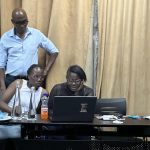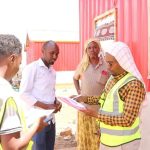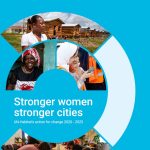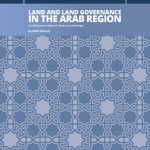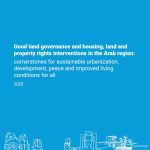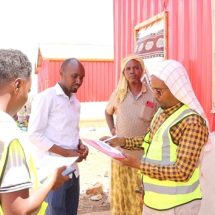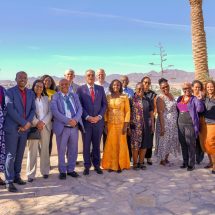Participants in the just concluded Global Land Tool Network (GLTN) workshop on ‘Tools for Youth Responsiveness in the Land Sector’ left the Lake Naivasha Country Club in Kenya’s Nakuru County on Wednesday 23 July, 2014 with a strong sense of accomplishment – this after three days of intensive discussions and collaborative learning.

Participants are seen engaged in a keen discussion on the workshop’s opening day
Capacity Development Expert within the GLTN and co-facilitator of the workshop, Jean du Plessis encouraged participants to “find [themselves] in these documents” – his reference being made to the draft Youth Responsiveness Criteria, complimented by an Issues Guide on five predetermined thematic areas.
“If you do not find yourselves there, it means that these documents would not work for you,” he said.
The three-day learning and tool development workshop was attended by GLTN and UN-Habitat partners committed to the advancement of youth and land issues globally.
With representation from 11 countries and some 15 strategically selected international and civil society organizations, as well as academic institutions, expectations were reasonably high. The workshop’s core objectives included: A shared understanding of the obstacles and opportunities for youth in the land sector; the exploration, improvement and development of innovative land-related concepts, tools and approaches towards youth responsiveness; a draft document highlighting the key obstacles and opportunities, and associated youth-responsive land tools and approaches – available globally; and the development of clear and implementable plans on the way forward.
The participants were given the opportunity to share experiences around land issues in their organizations, amongst which were five Youth-Led Action Research on Land (a joint GLTN/UN-Habitat initiative) projects from Brazil, Kenya, Yemen, Nepal and Zimbabwe. Designed and implemented by the youth organizations, this action research seeks to strengthen the knowledge base on youth and land, by addressing the missing linkages between them. The Youth Responsiveness Criteria, developed as a component of the action research, is a set of minimum requirements to assess various land frameworks ad policies as regards to their responsiveness to youth. Pilots of the Youth Responsiveness Criteria were carried out in Brazil, Kenya and Zimbabwe, with progress reported to the workshop.
According to participant Talita Castro of ISPIS Brazil – a Sao Paulo based civil society organization – it was always critical for participants of the various action research projects to identify and discuss the patterns in each other’s experiences. Having worked on the Sao Paulo-based leg of the project series for the past seven months, she sees the pilots as creating pathways and opportunities that are likely to fill the knowledge gaps of GLTN and UN-Habitat partners on the issue of youth responsiveness within the global land sector.
She added, “One thing I found in this research is that we have a lot of things that we are doing – like bringing solutions to cities that address a lot of issues related to youth – but people don’t recognize that these are related to land. To address this, I think we need more information.” Ms. Castro’s position on the need for more information was also echoed by her fellow action research participant Caleb Gichuhi of Sisi Ni Amani – a Nairobi-based non-governmental organization.
According to him, “There is a need to put out success stories. I want to see success stories for countries like Brazil where they have youth statutes that facilitate youth engagement in city-life. So there is this country, they had this problem, this was how it was dealt with, and here are the outcomes.”
The findings of action research projects in Nepal, Yemen and Zimbabwe were also highlighted – and unsurprisingly for the facilitators – sparked keen discussions. Participants were given the opportunity to inquire further on the methodologies and findings of the various action research projects.
 BK Shrestha of Nepal delivered a detailed presentation on the findings of the Nepal leg of the action research series
BK Shrestha of Nepal delivered a detailed presentation on the findings of the Nepal leg of the action research series
At the end of each day participants were invited to share their single most profound lesson learnt during that day. Reflective of the pool of responses from the workshop was that of one participant who wrote: “There are many success stories! How can we learn from these and from the failures too?” This was also an indication of participants’ adherence to the lead facilitator’s invitation to identify and explore the utility of the presented tools in their individual country or organizational contexts.
The draft Youth Responsiveness Criteria were presented, intensively debated and improved during the workshop. With the outcomes of the workshop having placed the Youth Responsiveness Criteria in a good position for successful finalization, Jean du Plessis in his reflection on the process said, “This is a long and challenging, but rewarding journey. This is not something that we just quickly do and sort out. There are no easy answers, no silver bullets. But good progress has been made.”
The GLTN and UN-Habitat Youth Team are currently making every effort to ensure that the Issues Guide – capturing the obstacles and opportunities highlighted at the Naivasha workshop – is completed for the impending review process that would precede the finalization of the Youth Responsiveness Criteria.
For more information on the Issues Guide on Youth and land and the Youth Responsiveness Criteria, you are invited to forward your requests to Priscilla Li Ying (Priscilla.liying@unhabitat.org).

